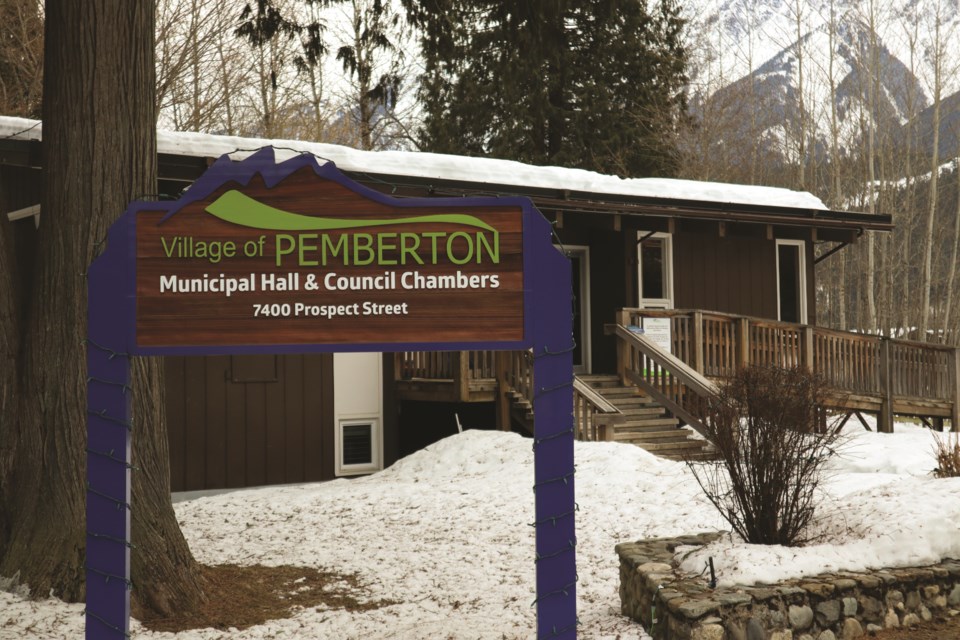With summer right around the corner, Pemberton’s water usage is once again a hot topic at the Village’s council table.
According to Village of Pemberton (VOP) manager of operations Tom Csima, who presented the VOP’s Water Conservation Plan at the village’s regular council meeting on Tuesday, April 5, the village’s water usage is higher than average.
The community uses about 600 litres of water per capita per day, according to the plan’s technical memo prepared by Keir Wood Leidal—well above the Canadian average of 427 litres per person per day.
The memo does note, however, that both of those figures include residential, industrial and commercial water use, which can distort per-capita as a metric when it comes to residential water use and conservation.
A relatively low population combined with high industrial water usage—like that which might be found in farming communities—can “inflate” the average per-capita metric, the memo notes.
“I think water is one of these things—especially in Canada, we’re surrounded by water, there’s water everywhere—people don’t really think of it as this precious commodity,” said Csima. “But it is. I mean, not only on a world stage, but even just what goes into treating and distributing water. I don’t think people realize how much is behind that. You know, just opening the tap and having water there. People take that for granted.”
Particularly in the summer months, the recharge rate of the Pemberton Creek Aquifer—the source of the village’s water—can’t keep up to the daily water use of the village without being managed very closely, according to the presentation to council.
On the hottest days last summer, Pemberton’s water usage reached heights of more than 1,200 L per person per day.
“I don’t think anyone in this room probably uses 1,200 liters personally, but that also obviously includes leaks in the system, watering your lawn. That’s a huge one. People watering their lawns, 50 per cent of that water ends up evaporating or going on the sidewalk and/or getting blown in the wind,” said Csima. “And that’s water that’s been chlorinated, treated, distributed, pumped through the system. So that’s also dollars going down the drain as well.”
With the goal of reducing the village’s per capita water usage by 15 per cent (or more) over the next 10 years, the water conservation plan lays out seven key measures the village can take to manage its water usage. The measures include: regulation, retail metering, consumption-based billing, water loss management, a demand management program, reporting usage and water budgets on water bills, and renewal of the water conservation plan.
As was seen during last summer’s heat dome, the village does have a multi-level water restriction gauge it puts in place when water use starts reaching levels that the aquifer can’t handle for an extended period of time. However, with those restrictions comes the challenge of enforcement, which can often be difficult with automated irrigation systems set to go off at all times of the day and night.
One solution to this issue would be retail metering of water use, according to Csima.
“I know that this has been discussed in the past and hasn’t been pursued on a universal metering scale anyways, but essentially it’s identified as one of the key components to conserving water,” he said. “Obviously if you know who’s using what water it’s a lot easier to target. First of all, you can bill them, more high-water users can be billed more, but also maybe you can identify leaks or overuse or ways that that can be conserved as well.”
Water loss management is another key element to reducing excess water use that the village has used in the past. According to Csima, a few years ago the town identified a major leak in some underground pipes, was able to repair it and saw an approximately 10-per-cent decrease in the town’s overall water usage from that one fix.
When it comes to reducing the village’s water use to the levels targeted in the plan, there is no single solution. And with Pemberton’s ever-growing population adding another element to the issue, water conservation is something that will be talked about and worked on for years to come.
But by posting the Water Conservation Plan to the VOP website, council hopes residents start to take notice of the issue and start doing their part to reduce the village’s water use in order to extend the life of the Pemberton Creek Aquifer
“We’ve talked about our capacity of our water system that’s largely based on this aquifer recharge rate [of 30 L per second],” said Csima. “So once we get to that 30 liters per-second usage average then essentially we are depleting that aquifer, and potentially causing irreversible damage and running out of water, essentially.”




